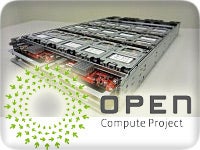Since the very beginning of the computer era, CPUs have been tied to specific slots. Intel chips fit in specific Intel-designed slots, while AMD chips fit into various AMD-designed slots.
But that could soon become a relic of a monolithic server architecture legacy.
Frank Frankovsky, Facebook’s director of hardware design, announced today the new Common Slot specification at the Open Compute Summit.
“We’re establishing for the first time a common slot for any SOC maker to design to a common standard,” Frankovsky said. “All the surrounding bits are the same, with DDR memory and network controllers, and now for the first time we will have the ability to have a common slot architecture.”
By having a common slot architecture, the goal is to enable a new level of server flexibility to scale and grow as needed. Frankovsky described the current approach of hardware-bound CPUs as being a monolithic architecture.
 The Common Slot specification will enable multiple CPUs from multiple vendors of multiple generations to co-exist on the same board. Frankovsky referred to the new boards that will support the Common Slot specification as a “Group Hub” board.
The Common Slot specification will enable multiple CPUs from multiple vendors of multiple generations to co-exist on the same board. Frankovsky referred to the new boards that will support the Common Slot specification as a “Group Hub” board.
“If we had left this to industry they probably would have gone out and found the most expensive and esoteric connector on the planet,” Frankovsky said. “What we decided to do was use a PCI-e x8 connector and simply change the pin-out.”
Frankovsky explained that the actual board layout is not being specified. Instead all the Open Compute Project is doing is encouraging people to use a common slot for CPUs.
“We will now not be bound by placement of components on a single monolithic motherboard,” Frankovsky said. “We will be able to do smarter tech refreshes.”
The new Common Slot specification will help to expand the Open Compute Project’s OpenRack effort that was announced in 2012. With OpenRack, the nature of rack architecture is changed to enable a more flexible design and component layout. The Open Compute Project itself got its start in April of 2011 as a cross-industry effort to enable more agile and efficient server and data center design.
Sean Michael Kerner is a senior editor at InternetNews.com, the news service of the IT Business Edge Network, the network for technology professionals Follow him on Twitter @TechJournalist.

